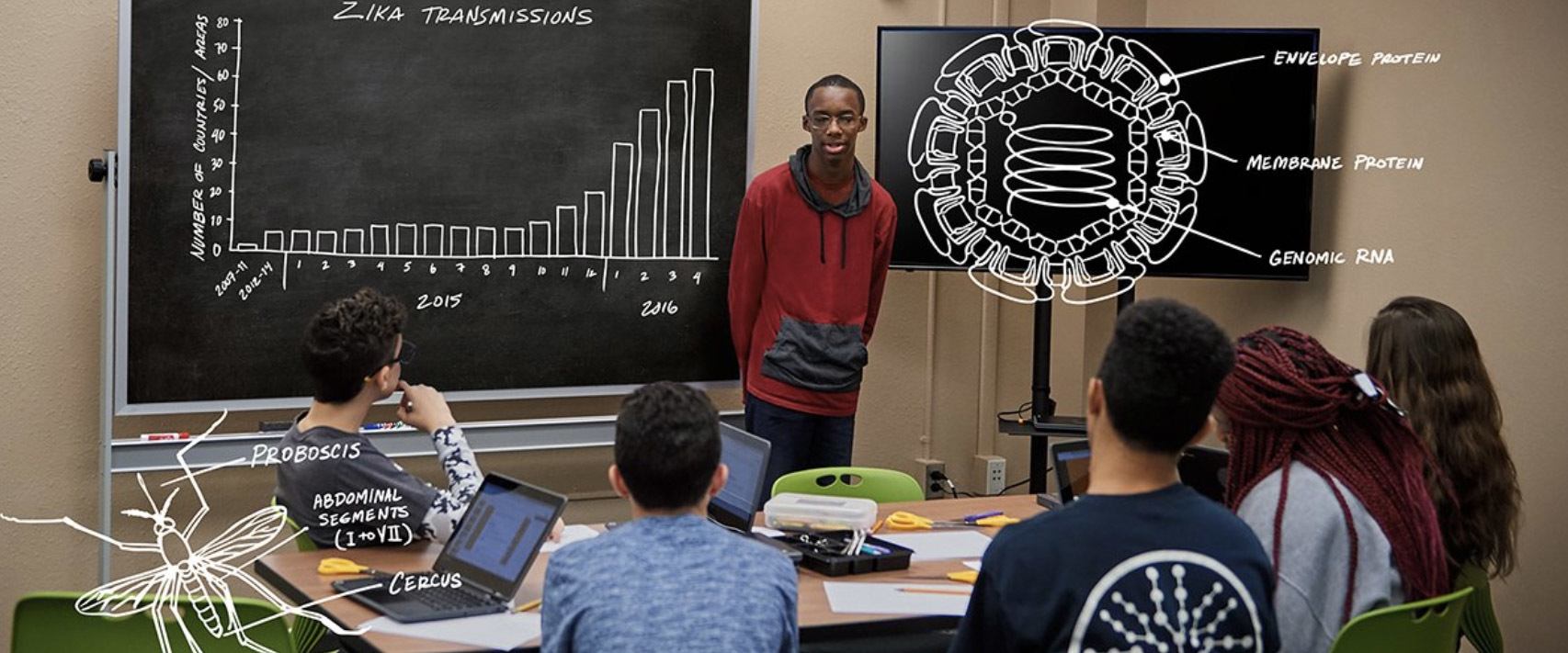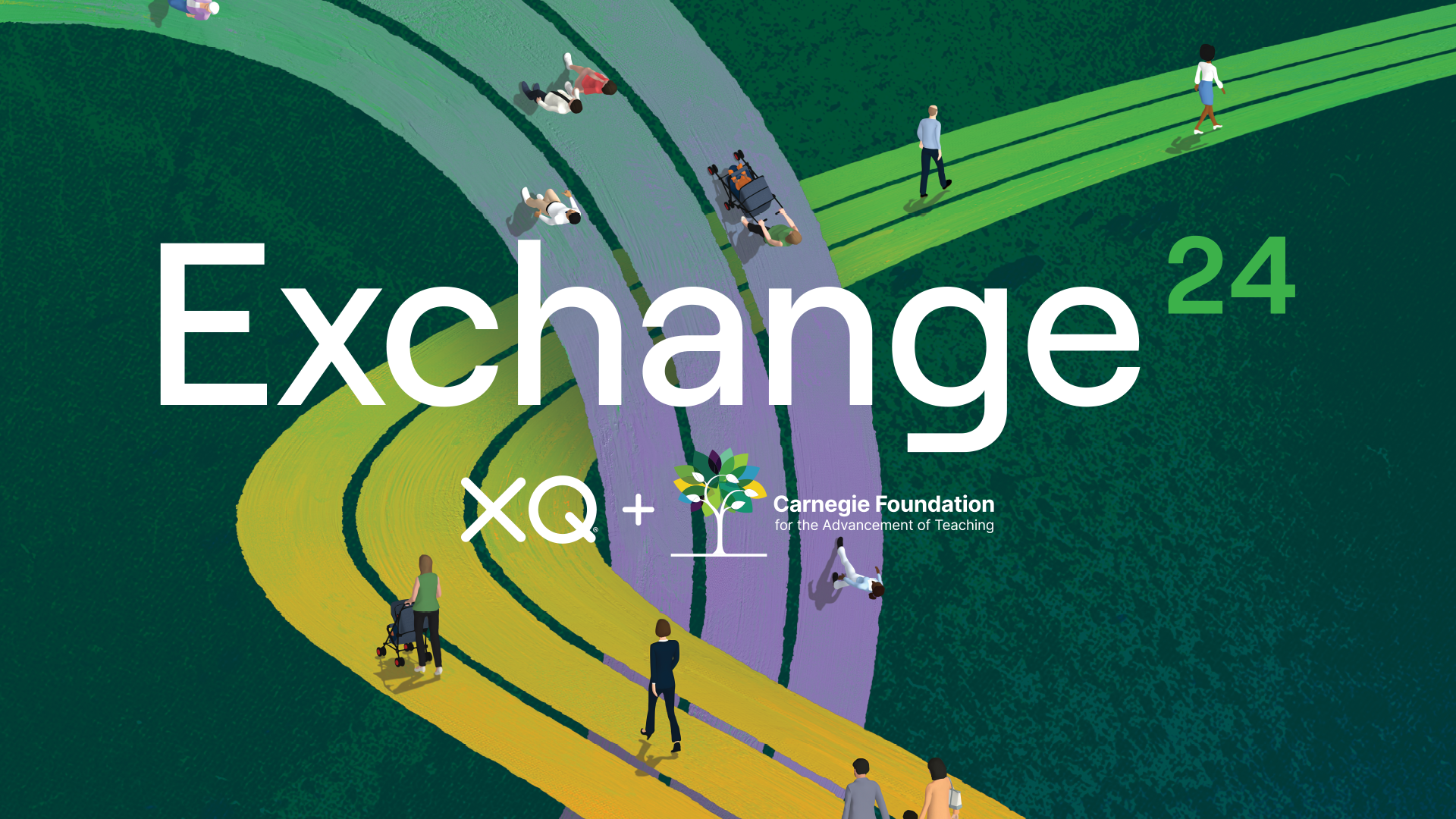Researchers and teachers agree: Students deserve a seat at the table
What can we do to both develop a sufficient and sustainable learner and break down the damaging idea of a learning hierarchy? We can begin by creating a student-centered learning environment where we start with what the students already know rather than what’s on page one of the textbook.

Before anyone even walks through the doorway, a room can send one of two invitations: “Come in and collaborate” or “Know your place.”
Pixar Animation Studios, one of the most innovative companies on the planet, didn’t come to this information easily or by accident. They found irrefutable evidence that there is a power in the way a room is designed.
According to the author of Creativity, Inc. Ed Catmull, the mere positioning of a chair can make all the difference in engagement and innovation of a whole team. He goes on to say that when the Pixar team switched to a square table, a seating arrangement that distinguishes no one person and maximizes the feeling of inclusion and egalitarianism, the results were tangible. Ideas for stories like Toy Story and Finding Nemo resulted from the increased creativity and collaboration.
The Flaw of Traditional Classroom Design
Imagine what happens when not only the room but the history of the building itself, all the activities in the space, and even the concept of success are designed with a literal and figurative “head of the table.” This is precisely the situation presented by a traditional, single-subject classroom setting. This design flaw goes deeper than interior design, and the ramifications are more permanent, too.
In the traditional school, students are aligned in rows or clustered together in ways that make it easy to see and hear the teacher, who is not only front and center but the fulcrum of classroom activity. In a more progressive classroom, the teacher might sit in the back or with students at their tables; it’s a novel approach, but does not address the underlying issue.
The larger and more insidious problem is the way the thoughts and ideas in the classroom are attached to that fulcrum. This phenomenon negatively affects teachers’ perceptions of students and students’ own perceptions of themselves as learners.
Whether we as educators mean to or not, creating a solely lesson-driven classroom sends the unmistakable message to students that someone else is responsible for their learning. The teacher decides the content to be taught, how it will be presented, and how it will be evaluated.
The Problem with Lecture-Style Classes
In How People Learn, Bransford’s research support this conclusion. Lecture-style classes may disseminate a lot of content to many students simultaneously, but the “one-way” nature of the structures “often promote passive and superficial learning.” Maryellen Weimer, in her book Learner-Centered Teaching, goes on to suggest the format itself fails to “stimulate student motivation, confidence, and enthusiasm.”
This is completely counterproductive considering that we know what the future of work demands: people who can adapt to changing environments by essentially retooling themselves many times over the course of their career.
Learning New Skills
In her article “Future of Work: Learning to Manage Uncertainty,” Heather McGowan found that every 18 to 24 months the average job changes so significantly that learning new skills is required just to maintain the previous level of success. In order to effectively adapt, a worker must first be reflective enough to identify where he or she is lacking information, then engaged and competent enough to identify how to correct the hole.
Examining the Power Dynamic
How do we build self-aware and agile learners when teachers traditionally occupy the place of “owner” of the learning process?
Whether explicitly, through lesson plans that make little room for learner choice and voice, or implicitly, through faulty classroom design, we are unwittingly and aggressively discouraging student agency in the processes of their own learning.
It’s true students are there to acquire a specific content or skills, but the explicit power dynamic of a classroom of one expert and twenty novices just reinforces the idea that the agency and momentum of the class belongs to the teacher and not the students.
According to Weimer, at the very least this dynamic demotivates some students from actively engaging in that particular classroom and subject. Worse, this situation could potentially be present in the students’ other single-subject classrooms. Possibly all day long. Possibly for an entire academic career.
We know that students have a wide variety of experiences and diverse skills and expertise outside of the classroom, but in the old-fashioned teacher-as-fulcrum classroom, the teachers may never have an opportunity to see evidence of those talents at all. In its extreme, the system creates a narrowly-focused model of expert and novices, reinforcing a student perception of their passive role in their own learning.
What’s worse is the teacher can come to believe it, too. Since Robert Rosenthal’s seminal research on the powerful effects of teacher expectations in 1964, we have known the consequences of a teacher’s expectations being lowered by any kind of bias. Catching glimpses of the students in interdisciplinary environments is one way to keep academic bias in check.
What Can We Do?
So, what can we do to both develop a sufficient and sustainable learner and break down the damaging idea of a learning hierarchy? We can begin by creating a student-centered learning environment where we start with what the students already know rather than what’s on page one of the textbook.
As teachers and curriculum developers, we can introduce interdisciplinary project-based learning that allows students to bring in strengths from other areas to support their learning and create connections across wide areas of understanding. Simply allowing students a voice in how they will learn, master, and evidence their learning goals goes a long way to empowering students in their own intellectual abilities.
Our students’ future is shaping up to be a place where learning how to learn will be the ultimate skill they’ll need to master. That’s why it’s time we shift the power dynamic and give students a proper seat at the table in their own education.
Learn more about Florida’s XQ Super School PSI High School here.









